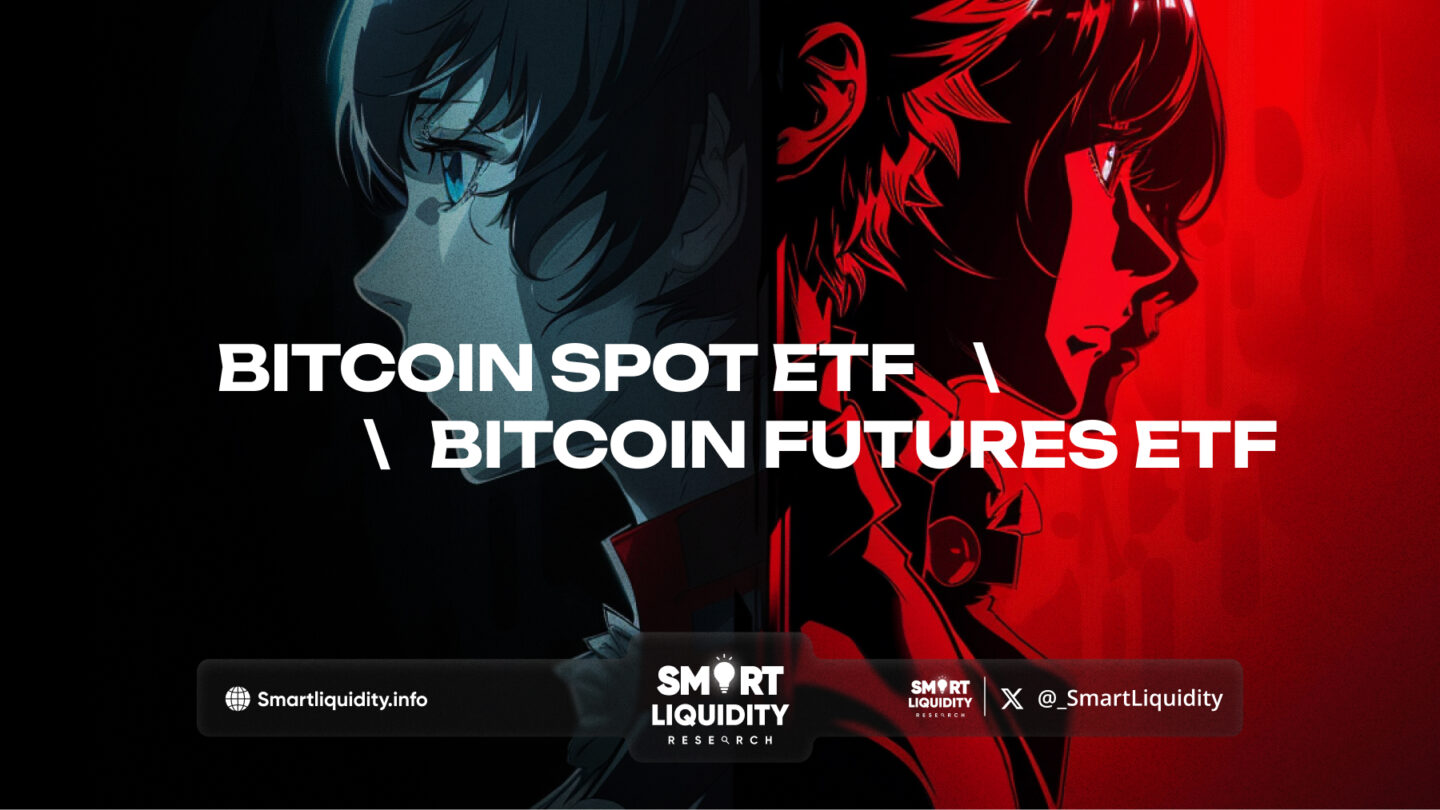Bitcoin Spot ETF vs. Bitcoin Futures ETF


The rise of Bitcoin exchange-traded funds (ETFs) has given investors new ways to gain exposure to the cryptocurrency market. However, not all Bitcoin ETFs are created equal. Two main types have emerged: Bitcoin Spot ETFs and Bitcoin Futures ETFs. Understanding the differences between these options is crucial for making investment decisions.
Overview of Bitcoin Spot ETFs
A Bitcoin Spot ETF is an investment fund that directly holds Bitcoin as its underlying asset. When you invest in a Bitcoin Spot ETF, you’re effectively buying shares that represent ownership of physical Bitcoin. The value of these shares is directly tied to the real-time price of Bitcoin in the market. This type of ETF provides a straightforward and transparent way to gain exposure to Bitcoin without needing to manage the complexities of buying, storing, and securing the cryptocurrency yourself.
The appeal of a Bitcoin Spot ETF lies in its simplicity and direct correlation to Bitcoin’s price. Investors can buy shares through traditional brokerage accounts, and the ETF’s value will rise or fall in tandem with Bitcoin’s market price. Additionally, Bitcoin Spot ETFs typically come with lower management fees compared to their futures-based counterparts because they don’t require complex derivative contracts to operate.
However, the availability of Bitcoin Spot ETFs is limited due to regulatory hurdles. Many countries have yet to approve such ETFs, largely because of concerns over market manipulation and the challenges of ensuring proper custody of the underlying Bitcoin. As a result, while Bitcoin Spot ETFs offer a direct and efficient means of gaining Bitcoin exposure, they are not as widely accessible as other forms of Bitcoin ETFs.
Overview of Bitcoin Futures ETFs
A Bitcoin Futures ETF, on the other hand, does not hold physical Bitcoin. Instead, it tracks the price of Bitcoin through futures contracts. These contracts are agreements to buy or sell Bitcoin at a predetermined price on a specific date in the future. By investing in Bitcoin Futures ETFs, investors are betting on the future price of Bitcoin rather than the current price.
Bitcoin Futures ETFs offer several advantages, particularly in regions where Bitcoin Spot ETFs are not available due to regulatory restrictions. Futures contracts are already a well-established financial instrument, and regulators are more comfortable approving ETFs based on them. This has led to a wider availability of Bitcoin Futures ETFs, especially in the United States, where the SEC has been reluctant to approve Bitcoin Spot ETFs but has allowed Futures ETFs to proceed.
However, Bitcoin Futures ETFs come with their own set of complexities and risks. The performance of these ETFs can deviate from the actual price of Bitcoin due to the structure of futures contracts. Factors such as contango (when futures prices are higher than the spot price) and backwardation (when futures prices are lower than the spot price) can cause these ETFs to underperform or over perform relative to Bitcoin’s spot price. Additionally, Bitcoin Futures ETFs often carry higher management fees due to the active management required to roll over futures contracts as they near expiration.
Regulatory Differences Between Spot and Futures ETFs
The regulatory landscape for Bitcoin ETFs is a critical factor in determining their availability and structure. Bitcoin Spot ETFs face more stringent regulatory scrutiny because they involve the direct purchase and custody of Bitcoin. Regulatory bodies, like the SEC in the United States, have expressed concerns about the potential for market manipulation, security of the underlying assets, and the transparency of pricing in the spot market. As a result, approvals for Bitcoin Spot ETFs have been slow, and many proposed products have been rejected or delayed.
In contrast, Bitcoin Futures ETFs are more readily approved because they are based on futures contracts, which are already regulated financial instruments. The SEC and other regulatory bodies are more comfortable with the established framework governing futures markets, including the margin requirements, position limits, and daily settlement processes that help mitigate risks. This regulatory comfort has allowed Bitcoin Futures ETFs to gain a foothold in the market even as Bitcoin Spot ETFs remain in regulatory limbo in many jurisdictions.
Despite this, there is ongoing debate within regulatory circles about whether the current oversight of Bitcoin Futures ETFs is sufficient, especially given the volatility and unique risks associated with the underlying cryptocurrency. As the market matures and more data becomes available, regulators may revisit the frameworks governing both types of ETFs.
Risk Factors: Spot vs. Futures Bitcoin ETFs
Both Bitcoin Spot and Futures ETFs carry inherent risks, but the nature of these risks differs significantly.
For Bitcoin Spot ETFs, the primary risks involve custody and market volatility. Since these ETFs hold actual Bitcoin, there is always the risk of security breaches or loss of the underlying assets. Additionally, the value of a Bitcoin Spot ETF is directly tied to the volatile Bitcoin market, meaning that sudden price swings can significantly impact the value of the investment.
Bitcoin Futures ETFs, while not directly exposed to the risks of holding physical Bitcoin, are subject to the complexities of the futures market. One of the main risks is the potential for performance drag due to the need to roll over futures contracts. When futures prices are in contango, the ETF must buy new contracts at a higher price than the expiring contracts, which can erode returns over time. Furthermore, the leverage inherent in futures contracts can amplify losses during periods of market stress.
Investors in Bitcoin Futures ETFs must also be mindful of liquidity risks. While futures markets are generally liquid, extreme market conditions can lead to situations where it is difficult to exit positions without incurring significant losses.
Market Impact and Liquidity of Bitcoin ETFs
The introduction of Bitcoin ETFs, both Spot and Futures, has had a profound impact on the broader cryptocurrency market. These products have provided institutional and retail investors with easier access to Bitcoin, leading to increased market liquidity and broader adoption of the cryptocurrency as an asset class.
Bitcoin Spot ETFs, where available, contribute directly to the Bitcoin market by requiring the purchase of actual Bitcoin to back the fund. This can lead to increased demand and upward pressure on Bitcoin’s price, especially in markets with limited supply. Moreover, the introduction of Spot ETFs has the potential to reduce price volatility by bringing more long-term, institutional investors into the market.
Bitcoin Futures ETFs, while not directly affecting the spot market through physical purchases, influence the market through the futures curve. The activity in futures markets can affect spot prices, particularly when large volumes of contracts are traded. Additionally, the presence of Bitcoin Futures ETFs has provided a mechanism for price discovery and hedging, contributing to a more mature and stable market environment.
However, both types of ETFs can also introduce new forms of volatility. For instance, large redemptions or rollovers in Futures ETFs can lead to sudden shifts in the futures market, which may spill over into spot prices. Similarly, the launch of a new Spot ETF could lead to a temporary surge in demand for Bitcoin, followed by increased volatility as the market adjusts.
Conclusion
Choosing between a Bitcoin Spot ETF and a Bitcoin Futures ETF depends on an investor’s risk tolerance, investment strategy, and regulatory environment. Bitcoin Spot ETFs offer direct exposure to the cryptocurrency’s price but come with the challenges of market volatility and security risks. On the other hand, Bitcoin Futures ETFs provide a more accessible way to gain exposure in regulated markets, though they carry risks related to futures contract management and performance deviations. As the market continues to evolve, both types of ETFs will play a critical role in shaping the future of Bitcoin investment.




